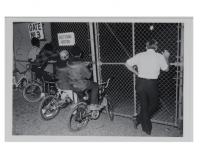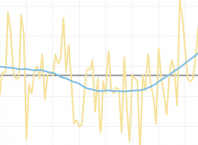“Tyler is changing.” It’s a conversation starter I’ve heard over and over the last few years. From going wet, to South Broadway’s construction boom, to the bright new coats of paint on many Hispanic businesses in northeast, the pace of change here seems to be speeding up.
Here’s another bit of evidence, one I’ve suspected for a while but can be harder to see: Tyler is getting younger.
From 2006 to 2010, according to the US Census Bureau, the median age in the city of Tyler was almost exactly 34 years old. Five years later, it had fallen to 33.
A difference of one year might not seem like much, but it makes Tyler quite the outlier; over the same period, the median age of all Texans rose by 0.7 years. Even hipster-magnet Austin got older, along with every other city in Texas with more than 100,000 residents — except Tyler and Midland.
So what’s pulling our median age downward? If you’ve noticed shiny new elementary schools pop up in Tyler in recent years, you might think it’s a sudden baby boom. But it turns out kids don’t make up a larger proportion of Tyler’s population today than they did five years ago.
In fact, the only group that grew significantly is adults aged 25 to 29. There are approximately 1,800 more folks in that age group living here today than there were five years ago.
What’s attracting those millennials to Tyler, instead of, say, Dallas, Austin, or beyond? There are a few hypotheses worth considering:
- Cost of living: Soaring rents have made many cities unaffordable even for renters with college degrees and well-paying, secure jobs. Hearing the horror stories, maybe more Tyler college grads are cooling their heels instead of moving on.
- Homes: In bigger cities, sticker shock awaits millennials looking to buy, too. According to Zillow, the current median listing price for a home in Dallas is $355,000. In Austin, it’s $375,000. In Tyler, the median listing price is $210,000.
- Jobs: Over the past 10 years, according the Bureau of Labor Statistics, Tyler’s unemployment rate has averaged one percentage point lower than the national rate —and frequently below the the Texas rate as well.
- Family: The financial crisis kicked off a trend of young adults moving back in with their parents after college. It’s unclear to what extent this might be happening in Tyler, but this could be playing a part here as well.
One thing we don’t know, regrettably, is how many of those 25-29 year olds are local college grads; none of the available demographic data are detailed enough to allow us to track changes in educational attainment by age.
But if more recent degree earners are choosing to stay in Tyler, that’s big news. Historically, the flight of new graduates has been a major drag on small college towns like ours, a phenomenon nicknamed the “brain drain.”
Even without a deep dive into the numbers, I’m sure I’m not the only one for whom Tyler just feels younger these days. Tyler went wet only a few years ago, but today we have multiple craft breweries and bars. Our new independent coffee shops, The Foundry and Strada, are often crowded with 20-somethings, and sell beans from local roaster Porch Culture Coffee. None of these businesses were around when I moved here six years ago.
So are businesses that tend to be popular with this age group flourishing in Tyler because more young people are sticking around, or are the growing numbers of young folks creating and sustaining the businesses they want? That’s a chicken-and-the-egg question that, for now, we can’t answer with the data we have.
How this wave of young adults will change Tyler remains to be seen. For one thing, we don’t know how many have college degrees, which determines what kinds of jobs they can get. But more millennials in town almost certainly means more customers for coffee shops, bars, record stores, and the like. In a few years, we’ll know whether these changes are a blip or a sea change, but in the meantime, just keep an eye on what new businesses are opening up.
Are you a young adult who has recently moved to Tyler or chosen to stay here after school? Tell us your story! [email protected]
Unless otherwise noted, numbers cited in this report are from the American Community Survey 5-year samples. Only changes that are statistically significant (at 90% confidence) have been included.
Love what you're seeing in our posts? Help power our local, nonprofit journalism platform — from in-depth reads, to freelance training, to COVID Stories videos, to intimate portraits of East Texans through storytelling.
Our readers have told us they want to better understand this place we all call home, from Tyler's north-south divide to our city's changing demographics. What systemic issues need attention? What are are greatest concerns and hopes? What matters most to Tylerites and East Texans?
Help us create more informed, more connected, more engaged Tyler. Help us continue providing no paywall, free access posts. Become a member today. Your $15/month contribution drives our work.







